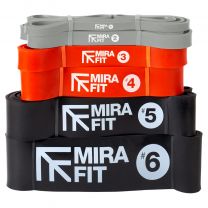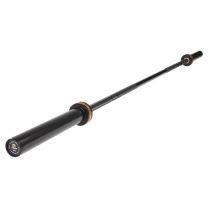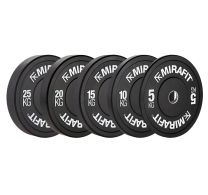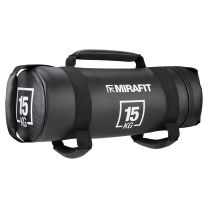What is Functional Training?
What is Functional Training?

The words ‘Functional Training’ get somewhat thrown around in the health and fitness industry, creating ambiguity around what it means to train functionally. In essence, any exercise can be functional, if it serves a particular function. If you just want big biceps, you could just do a bicep curl and it would serve that function.
However, if your goals are to improve your ability to meet the demands of daily life or a particular sport, it becomes a little more confusing.
We’re going to take a look into foundation movement patterns and how functional training can help you for both sport and daily life (as per research by Tompsett and colleagues, 2014).
What Makes Foundation Movements 'Functional'?
Squat

Starting from a standing position, the hips and knees bend at the same time until your thigh is parallel to the floor, or lower, after which you stand back up, with the hips and shoulders rising and falling at the same rate.
Functional For Sport
Jumping, landing, sprinting or picking up a loose ball.
Functional for Daily Life
Sitting and standing or picking up heavy objects.
Functional Training - Squat
Box squats, barbell front squat, or a Kettlebell goblet squat.
Hinge

From a standing position, the functional training movement is initiated by driving your hips backwards, without excessive knee bend so that the hip musculature does most of the work (the low back, glutes and hamstrings).
Functional for Sport
Dribbling a hockey ball, vertical jumping, kicking or throwing.
Functional for Daily Life
Sitting and standing, forward bending, leaning over or picking up heavy objects
Functional Training - Hinge
Single leg kettlebell RDL, or a barbell deadlift.
Lunge

The lunge is a single leg exercise where your feet are staggered; one foot in front of your body and one behind. Your weight needs to stay balanced between your feet, your feet and knees all facing forward, and your pelvis stays level, thus developing our ability to stabilize the hips under an uneven load. In essence, it’s an exaggerated sprint stride, but with load.
Functional for Sport
Sprinting, running, dodging or side stepping.
Functional for Daily Life
Walking, walking upstairs, climbing up a ladder, kneeling or standing up from the floor.
Functional Training - Lunge
Sandbag walking lunges, Barbell split squats or even dumbbell reverse lunges.
Push

Pushing mechanics are first observed in children as they push their body away from the floor to stand up. An example of a push movement is a push up or a bench press; any movement where you push your body away from a surface or an object away from your body.
Functional for sport
Overarm throw, rugby tackle, hitting a ball with a bat, swimming or absorbing your bodyweight when falling.
Functional for daily life
Cleaning, operating machinery, moving furniture and other large objects, pushing trolley, closing doors, Driving or Mowing.
Functional Training - Push
Resistance band push-ups, barbell bench press or dumbbell bench press.
Pull

This is any action where you pull an object to you or yourself to an object; a movement seen in children as they pull themselves up onto their feet to stand up. Good examples of pulling movements are pull ups, bent over rows or dumbbell rows.
Functional for Sport
Gymnastics, swimming, throwing or a tennis serve.
Functional for Daily Life
Manoeuvring a chair towards a table, walking the dog, pulling to stand, sweeping/cleaning, opening doors or picking up an object.
Functional Training - Pull
Pull ups, barbell bent over rows or even dumbbell single arm rows.
Rotate

This refers to the rotation of our thoracic spine (upper back), while our lumbar spine (lower back) and pelvis stay put. The ability to rotate is a largely misunderstood concept. Yes, we want our whole spine rigid for a squat but in other situations we do want our spine to be able to move, otherwise we’d move like C-3PO from Star Wars. So, loading this movement pattern during functional training is very important so that we are prepared for it when we encounter it in sport and daily life.
Functional for Sport
A tennis serve, cricket shot, rugby pass or a golf swing.
Functional for daily life
Looking behind to reverse a car, turning in place, holding uneven objects or even stretching to grab an object.
Functional Training - Rotate
GHD machine Russian twists, resistance band Pallof press or a resistance band lateral rotation.
Brace

Bracing is somewhat relevant to all movements in that we keep some body parts still to allow other body parts to move more efficiently. In this example, we are talking about bracing our core; we brace our core to make it stiff and allow better energy transfer through it, creating more forceful movement.
Functional for sport
Squatting, throwing, absorbing force, tackling in rugby or handstands.
Functional for Daily Life
Manual activities, reducing low back injuries, maintaining posture or balance.
Functional Training - Brace
Weighted planks, farmers walks, or Sandbag carries.
To take the guess work out of your gym work, incorporate functional training, and become more adept for your sport and for daily life.
Written by guest author Ewan Hammond.
For more content, follow us on Instagram, YouTube, TikTok, and on our official Mirafit Facebook page.
Enter your email to signup to our newsletter
Tags: Misc > Lifestyle








